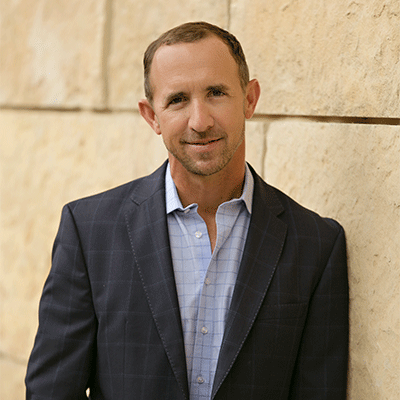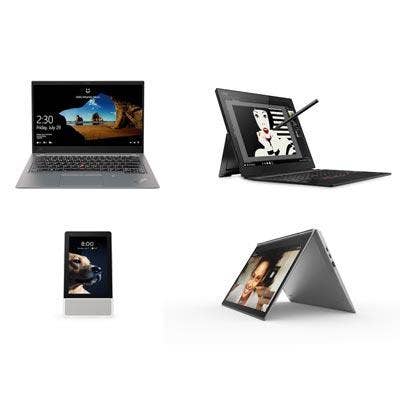Lenovo North America Interim President On The Change In Channel Chief, Resolving Pricing Concerns And Channel Investment In 2018

Teismann On The Record
It's been a busy week for Lenovo on several fronts. The company unveiled an array of new devices, including refreshed a ThinkPad X1 lineup and new smart devices, at CES 2018 in Las Vegas. Lenovo also disclosed that Sammy Kinlaw is departing as vice president and channel chief for Lenovo's North America PC business as of Jan. 19. Lenovo has appointed a veteran of the company -- Rob Cato, executive director for public sector, workstation and OEM -- to serve in Kinlaw's role on an interim basis as Lenovo looks for a permanent channel chief.
Christian Teismann, who is the interim president for Lenovo North America, told CRN this week that Kinlaw's upcoming departure "doesn't change our commitment to the channel." Teismann also said that initial blowback from some partners about pricing changes in the fall has not persisted, now that contract pricing has been restored by Lenovo for partners on a case-by-case basis. "So far the feedback we have gotten after we worked through [the issues] with the channel partners is, in most of the cases, actually not as negative as sometimes it was portrayed to us," Teismann said.
Teismann discussed the latest channel changes, as well as investments and opportunities for Lenovo partners in 2018, with CRN during CES 2018. What follows is a portion of the conversation.

What is your message to partners concerned about the upcoming departure of Lenovo Channel Chief Sammy Kinlaw (pictured)?
First of all, the message to partners is that even though Sammy is moving to a new opportunity outside of our company, it doesn't change our commitment to the channel. We drive more than 90 percent of our business through the channel. We are meeting extensively with channel partners here at CES, basically every single day. The channel is the core of our go-to-market. That's not changing. What I also want to say is, Rob [Cato] has extensive experience with the channel, in various roles. He's run, over the last couple of years, our public sector business as well as built our workstation business. And those businesses intensively are relying on our strong channel partners. So when Sammy decided to move to a new opportunity, Rob was a natural choice. And I think that's the good thing in a company that has a strong DNA toward the channel -- that there are always a lot of senior executives who have strong channel experience. I believe for our partners, they will see no change in terms of strategy. They will see no change in terms of the quality of the coverage and our commitment.

Could you talk about some specific investments you're making in the channel in the coming year, compared to what you were doing in 2017?
What we are clearly driving is sustainable growth. We are not necessarily going just for units. We really want to go for business that is creating joint value for the channel, for us, and for customers. ... What you will see much more in 2018 is that we are specifically investing in growing our share in SMB. We've done it very successfully over the last couple of years with what we call top seller. But what we've seen more and more is that we need to make specific investments together with the channel to really create a stronger presence in the SMB market. And we are expanding our portfolio for SMB. We are expanding our service offerings that we want to bring to the market with the channel, [so that] we can create a more comprehensive portfolio that is tailored toward SMB. We have a very, very strong market-share position in commercial enterprise -- very large business. And clearly our market share is not as strong in SMB, and that's what we see as our biggest opportunity to grow. And that's where a lot of our investments will go.

In the recent pricing changes, was there a decision made to not price-protect partners for longer-term contracts that they've entered into with customers for Lenovo products?
I'm not sure that 'price protection' is something that we would've done in the past. I'm not sure it is something we do. ... What we are trying to do is find the right balance with our channel partners on growth opportunities, so that for both sides it's a profitable business. Quite frankly we did change our channel program structure in October. And so far the feedback we have gotten after we worked through [issues] with the channel partners is, in most of the cases, actually not as negative as sometimes it was portrayed to us. Actually, a lot of partners came back to us and said it's much more predictable, and it allows us really to double down on growth areas and invest jointly in growing together. So we see actually good feedback. And Rob clearly is picking this up now. And clearly every program does require adjusting and improving, and we will continue to do this over time. Overall we believe we are on the right track.

Our understanding was that on a case-by-case basis you were working with partners whose contracts were impacted by the pricing changes, to make sure they could fulfill their contract pricing. But were you only doing this for short-term contracts?
When a business partner has signed a contract with an end customer, where [the partner] was locked into the pricing, we worked with every single one of these business partners. When our program changes affected that contract, [we made sure that the partner] was able to continue to fulfill the contract.
So it wasn't like you cut it off at a certain point?
No.

Could you talk about how you are handling the Spectre and Meltdown processor vulnerabilities?
We're working extensively with both the CPU manufacturers -- Intel, AMD, Qualcomm to a certain degree -- as well as on the software side with mainly Microsoft, on working out solutions across the industry that we jointly can deploy with our customers. Clearly, it is our overarching objective that our customers are protected as well as we can do it. But clearly, this is an industry problem -- it's something that the industry needs to work through. And I believe there is a lot of awareness right now, and there is a lot of work that's already gone into it. And I think over the next couple of weeks you will see how this is materializing with clearly executable programs. But we are very, very deeply engaged with all partners on this one.

Overall, what do you want to say to partners about what to expect from Lenovo in 2018, and how you're going to be competitive with Dell and HP?
I believe what you see here at CES, both on the commercial side of the business as well as on the consumer side, is that innovation is still the No. 1 differentiator for Lenovo. If you look at our commercial lineup, it's the ThinkPad lineup and new areas like smart office. Or if you look at our consumer lineup, it's all the things we are doing with Google, with Microsoft, with virtual reality, and with always-on, always-connected mobility PCs. Or what [the Mobility Business Group] does in terms of mods to make smartphones even more compelling. ... All this is part of our strategy that we will really want to lead with innovation. And ultimately I believe this makes the biggest difference for all partners -- that they have a product portfolio that is really winning in the marketplace. At the same time, we need to make sure that our products are always competitively priced. And we need to make sure that we really are developing a healthy margin structure for our channel, by driving our traditional business very effectively, but also growing new categories that are important for Lenovo and for our partners. ... It's really important for us [this year] to stay even closer to our core channel partners than we've done in the past.